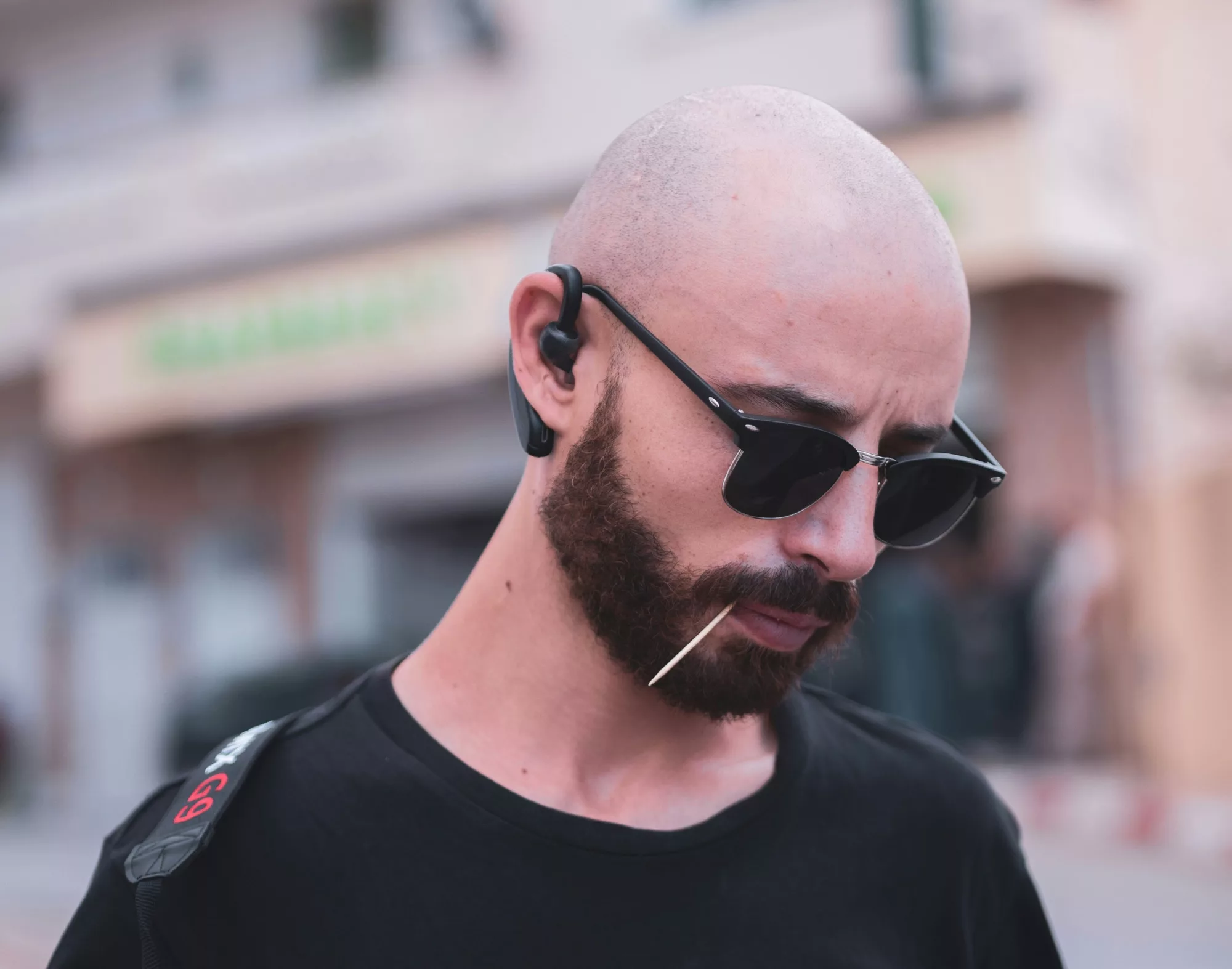Hair loss is one of those topics that can trigger instant insecurity — especially for men. Walk into any barbershop or scroll through social media, and you’ll notice something: far more men than women show signs of thinning hair or complete baldness. From subtle receding hairlines to shiny, fully exposed scalps, male baldness is so common that it’s often considered almost inevitable.
But why is that? Is it purely genetic? Is it about hormones? Or is it because men just age differently? While women can and do lose hair, they usually don’t experience it in the same pattern or to the same extent as men. The reasons for this difference are deeply rooted in biology, hormonal makeup, and — surprisingly — evolutionary history.
Let’s break down why men suffer from baldness more than women, separating hard science from common myths, and exploring whether there’s any way to truly prevent it.
Understanding Baldness: More Than Just Hair Falling Out
Before we dive into why baldness is more common in men, it’s important to understand what baldness actually is. The most common type is androgenetic alopecia, often called male-pattern baldness in men and female-pattern hair loss in women.
This condition isn’t about hair simply “falling out” like leaves in autumn. Instead, the hair follicles themselves shrink over time in a process called miniaturization. The hairs grow shorter, finer, and lighter until they eventually stop emerging altogether. This doesn’t happen evenly — men tend to lose hair in predictable patterns, starting at the temples and crown, while women usually experience overall thinning without complete bald spots.
The Hormone at the Center of It All: DHT
The main biological culprit behind male baldness is dihydrotestosterone (DHT), a byproduct of testosterone. While testosterone is the primary male sex hormone, the enzyme 5-alpha reductase converts some of it into DHT.
For genetically susceptible men, DHT binds to receptors in hair follicles and causes them to shrink. This miniaturization process shortens the hair growth cycle and makes new hair strands thinner and weaker. Over time, the follicle stops producing visible hair altogether.
Women also have DHT in their bodies, but at much lower levels — and they have higher levels of estrogen, which may counteract some of DHT’s effects on hair follicles.
Genetics: The Blueprint for Baldness
While hormones play the active role, genetics decide the stage. Your DNA determines how sensitive your hair follicles are to DHT. This is why some men can have high levels of testosterone and never go bald, while others start losing hair in their twenties.
The common myth is that baldness is inherited solely from the mother’s side of the family, specifically through the X chromosome. While there is truth to the maternal link (the AR gene on the X chromosome is tied to androgen receptor sensitivity), modern research shows that baldness is actually polygenic — meaning it’s influenced by multiple genes from both parents.
Why Men Experience More Baldness Than Women
Now we get to the real question: why do men go bald far more often than women? The answer is a combination of hormonal, genetic, and physiological differences.
1. Higher Levels of Testosterone and DHT
Men naturally have much higher testosterone levels than women. More testosterone means more DHT conversion, and for those with DHT-sensitive hair follicles, this is a recipe for faster and more pronounced hair loss.
2. Different Hair Growth Cycles
Hair grows in cycles: anagen (growth), catagen (transition), and telogen (rest). Men’s hair cycles can be shortened under DHT influence, meaning the growth phase becomes too brief to maintain thick, long hair. Women’s cycles are less affected due to their lower DHT exposure.
3. Pattern Differences in Follicle Sensitivity
In men, DHT sensitivity is often concentrated in the temples and crown, creating the familiar receding hairline and bald spot patterns. In women, DHT sensitivity is more diffuse, leading to general thinning rather than total baldness.
4. Menopause and the Female Advantage
Women often retain much of their hair until menopause, when estrogen levels drop significantly. This hormonal shift can accelerate hair thinning, but even then, most women maintain enough hair density to avoid the “shiny scalp” look that men commonly get.
The Evolutionary Perspective
Interestingly, some scientists believe male baldness might have an evolutionary component. The theory is that baldness could have served as a visual signal of maturity, status, or even reduced aggression, making bald men appear more trustworthy or wise. While speculative, this idea suggests baldness might have persisted in human populations not because it’s beneficial in itself, but because it didn’t hinder survival or reproduction enough to be eliminated by natural selection.
Stress, Lifestyle, and Modern Factors
While genetics and hormones are the main drivers, modern lifestyle factors can worsen hair loss for both men and women:
- Chronic stress increases cortisol, which can disrupt the hair growth cycle.
- Poor diet lacking in protein, iron, and essential vitamins can weaken hair.
- Smoking reduces blood flow to the scalp, accelerating follicle damage.
- Certain medications — such as some antidepressants, blood thinners, and blood pressure drugs — can cause hair shedding.
However, these factors rarely cause male-pattern baldness on their own; they simply accelerate the process if you’re already genetically predisposed.
Myths About Male Baldness
Myth 1: Wearing hats causes baldness — False. Hats don’t damage hair follicles; baldness happens at the skin level.
Myth 2: Poor scalp hygiene causes baldness — Also false. While a healthy scalp can promote better hair quality, cleanliness doesn’t prevent DHT-driven follicle miniaturization.
Myth 3: Baldness only comes from your mom’s side — Outdated belief; it comes from both sides of the family.
Myth 4: Frequent haircuts make hair grow thicker — Hair thickness is determined at the follicle, not by how often you cut it.
Treatments and Prevention Options
While there’s no universal cure for baldness, there are scientifically backed treatments that can slow, halt, or even partially reverse hair loss:
1. Minoxidil (Rogaine)
An over-the-counter topical solution that stimulates hair follicles and prolongs the growth phase. Works for both men and women, but results fade if you stop using it.
2. Finasteride (Propecia)
A prescription pill that inhibits 5-alpha reductase, lowering DHT levels and slowing hair loss in men. Not approved for women due to potential hormonal side effects.
3. Hair Transplant Surgery
Follicles from DHT-resistant areas (usually the back of the head) are transplanted to balding areas. Can provide permanent results, but it’s expensive and requires skilled surgeons.
4. Low-Level Laser Therapy
Devices like laser combs or helmets claim to stimulate follicles and improve blood flow. The scientific evidence is promising but not as strong as with medication.
5. Lifestyle Support
Balanced nutrition, stress management, and avoiding smoking won’t stop genetic baldness but can slow down other types of hair loss and improve hair quality.
Why Baldness Feels Different for Men and Women
For men, baldness is almost a cultural rite of passage — something they see in fathers, uncles, and friends. It can still hit self-esteem hard, especially if it happens young, but male baldness is so normalized that many embrace it by shaving their heads completely.
For women, hair thinning can be more emotionally distressing because it’s less common and less socially accepted. Women often face stronger beauty standards tied to hair, so even mild thinning can feel devastating. This is why female hair loss, though less common, tends to receive more emotional and psychological support treatments.
Final Thoughts
Men suffer from baldness more than women because of a mix of hormones, genetics, and biology that make their hair follicles more vulnerable to DHT’s effects. While it’s often framed as a cosmetic issue, it’s really a natural byproduct of human physiology and aging.
The good news? Modern treatments can slow or even partially reverse the process for those who want to fight it. And for those who choose to embrace it, history is full of bald men who’ve worn it with confidence — from movie stars to world leaders. In the end, hair may shape first impressions, but it doesn’t define your worth.


